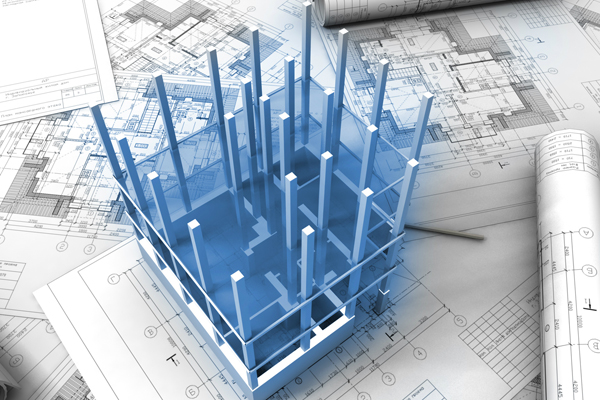
Revolutionizing Industrial and Warehouse Construction Projects: Unleashing the Power of BIM for Enhanced Efficiency and Precision
General Introduction
In the rapidly evolving construction industry, technological trends and advancements have brought about a paradigm shift in the way industrial projects are designed, managed, and executed. Among the array of innovations, Building Information Modeling, abbreviated as BIM, stands out as a game-changer for industrial and warehouse construction projects. By harnessing the power of BIM, these projects are able to achieve unparalleled levels of efficiency, precision, and cost-efficiency. This very article delves deeper into the usefulness of Building Information Modeling in the context of industrial and warehouse construction projects, highlighting its profound impact on the construction industry.
Streamlining Design and Visualization: Paving the Way for Clarity and Optimization
One of the foremost benefits of BIM technology lies in its ability to systematize the design process and facilitate improved visualization. By creating detailed, three-dimensional digital models, BIM empowers stakeholders to gain a comprehensive understanding of the final product even before construction begins. This level of clarity allows the identification of potential clashes, optimization of layouts, and informed decision-making. As an outcome, valuable time and financial resources are saved, while design quality is significantly improved.
BIM enables stakeholders, including architects, civil engineers, building contractors, and clients, to actively participate in the design phase. This collaborative approach ensures that all perspectives are considered, improving the overall efficiency of the industrial construction project. With the ability to acquire and integrate data from multiple sources, Building Information models eliminates silos of information, enabling seamless communication and fostering a shared understanding among project teams.
Improved Collaboration and Communication: A Unified Platform for Success
Effective collaboration and communication are of utmost importance for the success of any construction engineering project. BIM acts as a centralized platform that collaborates with all stakeholders involved in industrial and warehouse construction projects. Architects, engineers, contractors, and clients can access the 3D BIM model, allowing for seamless coordination, real-time updates, and rapid sharing of information. This integration improves teamwork, reduces conflicts, and ensures that everyone involved is on the same page throughout the construction project lifecycle.
By infusing 3D BIM technology with collaboration tools, such as cloud-based platforms and mobile applications, project teams can collaborate remotely, overcoming geographical barriers. This digital collaboration eliminates the need for time-consuming meetings and enables stakeholders to work collaboratively and efficiently, regardless of their physical location.
Enhanced Cost and Schedule Management: Fostering Efficiency and Accountability
Industrial construction projects often face challenges in managing finances and adhering to tight schedules. Building Information modeling technology provides robust tools for accurate cost estimation, resource allocation, and project scheduling. By integrating 3D BIM with quantity take-off tools and cost databases, precise quantities of materials and cost estimates can be generated, minimizing the risk of cost overruns. This data-driven approach ensures accountability and transparency among stakeholders, allowing them to make informed decisions based on accurate cost projections.
Furthermore, BIM’s project scheduling capabilities enable the efficient sequencing of construction activities for industrial construction projects and warehouses, reducing project delays and improving overall productivity. By visualizing the project timeline, identifying critical paths, and optimizing resource allocation, BIM technology empowers project teams to deliver projects on time and within budget.
Clash Detection and Risk Mitigation: Minimizing Rework and Maximizing Efficiency
Industrial and warehouse construction projects involve several systems and components that require seamless integration. BIM’s clash detection feature plays a vital role in identifying clashes and conflicts between different building elements, such as mechanical, electrical, and plumbing systems, as well as structural and architectural systems, at the design stage. By addressing these conflicts early on, the risk of costly and time-consuming rework during construction is mitigated, resulting in significant time and cost savings.
Moreover, BIM’s ability to simulate and analyze various scenarios assists engineers and architects in identifying potential risks and optimizing construction processes. By visualizing the project virtually, the project crew can proactively address potential issues in the planning and design stages, reducing the probability of errors, conflicts, and delays during actual construction. BIM’s holistic approach ensures smooth coordination among different trades, minimizing disruptions and improving overall project efficiency.
Accurate Construction Documentation: From Design to Reality
The comprehensive 3D modeling capabilities of 3D BIM modeling technology extend beyond design and visualization. It generates accurate construction documentation, including detailed construction drawings, project schedules, and detailed specifications. These precise and detailed construction documents for industrial and warehouse construction projects provide contractors with clear instructions, reducing ambiguity and enhancing construction quality. Additionally, the ability of BIM modeling technology to link specifications to building components facilitates efficient material procurement and better project control.
During the construction phase of industrial structures, BIM serves as a reliable source of information for contractors and subcontractors. It eliminates the reliance on outdated and fragmented paper-based construction documentation, ensuring that the project team has access to the most up-to-date and latest information at all times. This real-time data sharing minimizes errors, delays, and costly rework, resulting in a more streamlined and systematized construction process.
Facility Management and Maintenance: Sustaining Excellence
The benefits of Building Information Modeling extend beyond the construction phase. In the operation and maintenance stages, intelligent data integration using 3D BIM modeling technology for construction empowers seamless facility management. As-built models contain valuable information about building components, equipment, and maintenance schedules, facilitating effective facility management, energy optimization, and timely maintenance activities. This holistic approach ensures the longevity and sustainability of industrial and warehouse facilities, maximizing their operational efficiency and reducing life cycle costs.
Wrapping Up
BIM modeling has revolutionized industrial and warehouse construction projects, offering unprecedented benefits in terms of design optimization, collaboration, cost and schedule management, clash detection, accurate documentation, and facility management. Its ability to streamline construction processes, enhance coordination, and improve the overall efficiency of construction projects has made it an indispensable tool in the construction industry. As 3D BIM continues to evolve, embracing it will undoubtedly unlock new possibilities and pave the way for even more efficient and sustainable construction practices, reshaping the future of industrial and warehouse construction projects.




